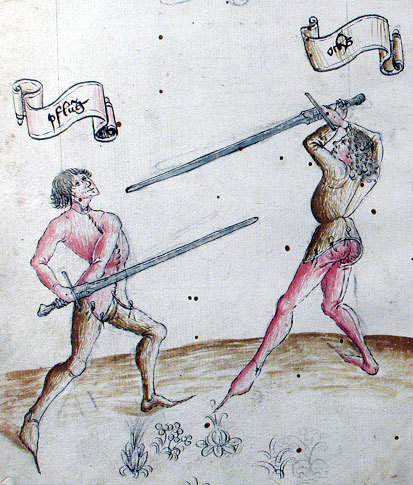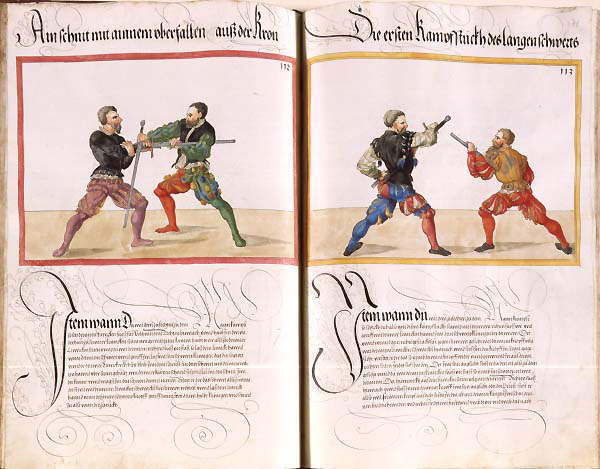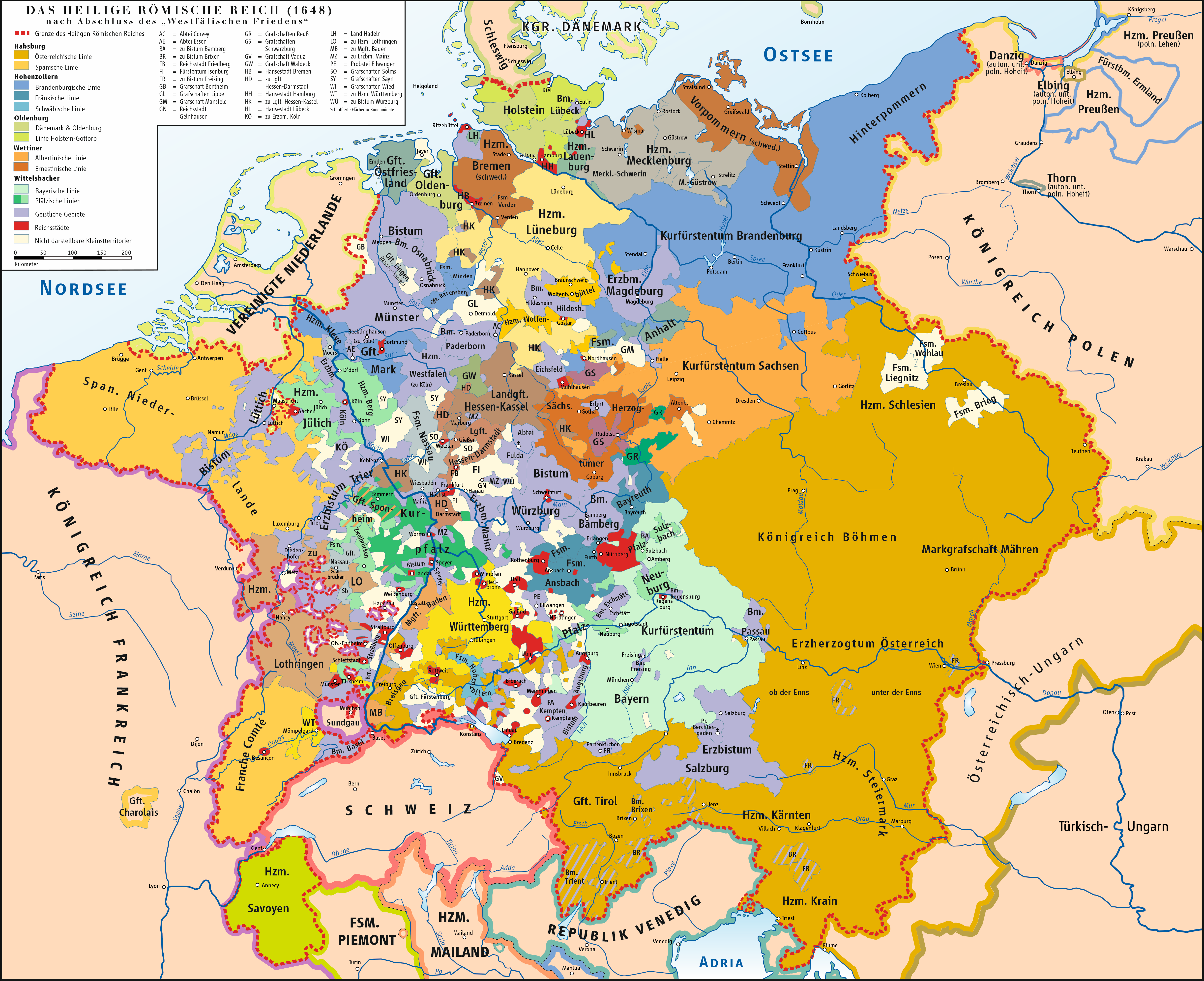|
Fechtschule
The German school of fencing (') is a system of combat taught in the Holy Roman Empire during the Late Middle Ages, Late Medieval, German Renaissance, and Early Modern periods. It is described in the contemporary Fechtbuch, Fechtbücher ("fencing books") written at the time. The geographical center of this tradition was in what is now Southern Germany including Augsburg, Frankfurt, and Nuremberg. During the period in which it was taught, it was known as the ', or the ''"Art of Fighting"''. The German school of fencing focuses primarily on the use of the two-handed longsword; it also describes the use of many other weapons, including polearms, medieval daggers, Messer (weapon), messers (with or without a buckler), and the stick fighting, staff, as well as describing mounted combat and unarmed grappling (''ringen''). Most authors of writings on the system are, or claim to be, in the tradition of the 14th-century master Johannes Liechtenauer. The earliest surviving treatise on Li ... [...More Info...] [...Related Items...] OR: [Wikipedia] [Google] [Baidu] |
Prize Playing
A Prize Playing was a test of martial art, martial skill popular in Tudor period, Renaissance England with the London-based Company of Masters, Corporation of Masters of the Noble Science of Defence. It involved several dozen bouts against continually refreshing opponents, with little or no rest in between. This practice was revived after a fashion in the late 17th century in the form of "Prize Fights", whence the term prizefighting for modern professional boxing. Renaissance Prize Playings The time and place for a Prize Playing was determined by the four Company of Masters, Ancient Masters of the school. Notices called Bills of Challenge were posted of the event and a wooden scaffolding was erected in a public square. A good number of formalities were observed and at one time rules were endorsed by the British monarch, Crown. On the appointed day and time, following a procession of drums and flags the Player was paraded to the raised scaffold with much fanfare. The public gathere ... [...More Info...] [...Related Items...] OR: [Wikipedia] [Google] [Baidu] |
Paulus Hector Mair
Paulus Hector Mair (1517–1579) was a German civil servant fencing master from Augsburg. He collected Fechtbücher and undertook to compile all knowledge of the art of fencing in a compendium surpassing all earlier books. For this, he engaged the painter Jörg Breu the Younger, as well as two experienced fencers, whom he charged with perfecting the techniques before they were painted. The project was very costly, taking a full four years, and according to Mair, consumed most of his family's income and property. Three versions of his compilation, and one later, less extensive manuscript, have been preserved. Not only did Mair spend huge sums on his collections and on his projects, he also had a very expensive lifestyle, frequently hosting receptions for the more important burghers of Augsburg. His own income was not sufficient for this, and during many years, he misappropriated funds from the city treasury, with the supervision of which he had been entrusted since 1541. His embezz ... [...More Info...] [...Related Items...] OR: [Wikipedia] [Google] [Baidu] |
Augsburg
Augsburg (; bar , Augschburg , links=https://en.wikipedia.org/wiki/Swabian_German , label=Swabian German, , ) is a city in Swabia, Bavaria, Germany, around west of Bavarian capital Munich. It is a university town and regional seat of the ''Regierungsbezirk'' Schwaben with an impressive Altstadt (historical city centre). Augsburg is an urban district and home to the institutions of the Landkreis Augsburg. It is the third-largest city in Bavaria (after Munich and Nuremberg) with a population of 300,000 inhabitants, with 885,000 in its metropolitan area. After Neuss, Trier, Cologne and Xanten, Augsburg is one of Germany's oldest cities, founded in 15 BC by the Romans as Augsburg#Early history, Augusta Vindelicorum, named after the Roman emperor Augustus. It was a Free Imperial City from 1276 to 1803 and the home of the patrician (post-Roman Europe), patrician Fugger and Welser families that dominated European banking in the 16th century. According to Behringer, in the sixteen ... [...More Info...] [...Related Items...] OR: [Wikipedia] [Google] [Baidu] |
Ringen
''Ringen'' is the German language term for grappling (wrestling). In the context of the German school of historical European martial arts during the Late Middle Ages and the German Renaissance, ''Ringen'' refers to unarmed combat in general, including grappling techniques used as part of swordsmanship. The German tradition has records of a number of master-''Ringer'' of the 15th to 16th centuries specializing in unarmed combat, such as Ott Jud. Medieval and early Renaissance wrestling treatises present both sport and combat techniques together as one art. The distinction is made more frequently by modern practitioners than is present in historical sources, but in a select few examples the terms for sportive grappling or ''geselliges Ringen'' and earnest unarmed combat or ''Kampfringen'' (where ''Kampf'' is the Early Modern German term for "war" or ''battle'') were used to describe specific techniques which were only suitable for one scenario or the other. There are no known sour ... [...More Info...] [...Related Items...] OR: [Wikipedia] [Google] [Baidu] |
Mounted Combat
The first evidence of horses in warfare dates from Eurasia between 4000 and 3000 BC. A Sumerian illustration of warfare from 2500 BC depicts some type of equine pulling wagons. By 1600 BC, improved harness and chariot designs made chariot warfare common throughout the Ancient Near East, and the earliest written training manual for war horses was a guide for training chariot horses written about 1350 BC. As formal cavalry tactics replaced the chariot, so did new training methods, and by 360 BC, the Greek cavalry officer Xenophon had written an extensive treatise on horsemanship. The effectiveness of horses in battle was also revolutionized by improvements in technology, such as the invention of the saddle, the stirrup, and the horse collar. Many different types and sizes of horse were used in war, depending on the form of warfare. The type used varied with whether the horse was being ridden or driven, and whether they were being used for reconnaissanc ... [...More Info...] [...Related Items...] OR: [Wikipedia] [Google] [Baidu] |
Stick Fighting
Stick-fighting, stickfighting, or stick fighting is a variety of martial arts which use simple long, slender, blunt, hand-held, generally wooden "sticks" for fighting, such as a gun staff, bō, jō, walking stick, baston, arnis sticks or similar weapons. Some techniques can also be used with a sturdy umbrella or even with a sword or dagger in its scabbard. Thicker and/or heavier blunt weapons such as clubs or the mace are outside the scope of "stick-fighting" (since they cannot be wielded with such precision, so sheer force of impact is more important), as are more formed weapons such as the ''taiaha'' used by the Māori people of New Zealand, and the ''macuahuitl'' used by the Aztec people of Mesoamerica in warfare. Although many systems are defensive combat techniques intended for use if attacked while lightly armed, others such as ''kendo'', ''arnis'', and ''gatka'' were developed as safe training methods for dangerous weapons. Whatever their history, many stick-fighting t ... [...More Info...] [...Related Items...] OR: [Wikipedia] [Google] [Baidu] |
Buckler
A buckler (French ''bouclier'' 'shield', from Old French ''bocle, boucle'' 'boss') is a small shield, up to 45 cm (up to 18 in) in diameter, gripped in the fist with a central handle behind the boss. While being used in Europe since antiquity, it became more common as a companion weapon in hand-to-hand combat during the Medieval and Renaissance periods. Its size made it poor protection against missile weapons (e.g., arrows) but useful in deflecting the blow of an opponent's weapons, binding his arms, hindering his movements, or punching him. MS I.33, considered the earliest extant armed-combat manual, (around 1300) contains an early description of a system of combat with buckler and sword. Typology According to the typology of Schmidt, there are three main types of buckler regarding their shape: *Type I: round *Type II: rectangular or trapezoid *Type III: oval or teardrop-shaped These types are combined with the cross sections: *Type a: flat *Type b: concave *Ty ... [...More Info...] [...Related Items...] OR: [Wikipedia] [Google] [Baidu] |
Art Of Defence
The Company of Maisters of the Science of Defence was an organisation formed in England during the reign of Henry VIII to regulate the teaching of the ''Arte of Defence'' or ''fencing'', using a range of weapons, including the rapier, quarterstaff, and, most notably, the broadsword. This school of fencing persisted throughout the 16th century but declined after the end of the Tudor period The Tudor period occurred between 1485 and 1603 in England and Wales and includes the Elizabethan period during the reign of Elizabeth I until 1603. The Tudor period coincides with the dynasty of the House of Tudor in England that began wit .... Tudor England It served to prevent unlicensed instructors from operating, both as a form of quality assurance and as a monopoly to protect the livelihoods of its members. It also regulated the conduct of members to one another, both instructor and student. Like the guilds it resembled, the company certified its members with varying ranks, depen ... [...More Info...] [...Related Items...] OR: [Wikipedia] [Google] [Baidu] |
Elizabethan
The Elizabethan era is the epoch in the Tudor period of the history of England during the reign of Queen Elizabeth I (1558–1603). Historians often depict it as the golden age in English history. The symbol of Britannia (a female personification of Great Britain) was first used in 1572, and often thereafter, to mark the Elizabethan age as a renaissance that inspired national pride through classical ideals, international expansion, and naval triumph over Spain. This "golden age" represented the apogee of the English Renaissance and saw the flowering of poetry, music and literature. The era is most famous for its theatre, as William Shakespeare and many others composed plays that broke free of England's past style of theatre. It was an age of exploration and expansion abroad, while back at home, the Protestant Reformation became more acceptable to the people, most certainly after the Spanish Armada was repelled. It was also the end of the period when England was a separate re ... [...More Info...] [...Related Items...] OR: [Wikipedia] [Google] [Baidu] |
Shakespeare
William Shakespeare ( 26 April 1564 – 23 April 1616) was an English playwright, poet and actor. He is widely regarded as the greatest writer in the English language and the world's pre-eminent dramatist. He is often called England's national poet and the " Bard of Avon" (or simply "the Bard"). His extant works, including collaborations, consist of some 39 plays, 154 sonnets, three long narrative poems, and a few other verses, some of uncertain authorship. His plays have been translated into every major living language and are performed more often than those of any other playwright. He remains arguably the most influential writer in the English language, and his works continue to be studied and reinterpreted. Shakespeare was born and raised in Stratford-upon-Avon, Warwickshire. At the age of 18, he married Anne Hathaway, with whom he had three children: Susanna Hall, Susanna, and twins Hamnet Shakespeare, Hamnet and Judith Quiney, Judith. Sometime between 1585 and 1592, ... [...More Info...] [...Related Items...] OR: [Wikipedia] [Google] [Baidu] |
Modern German
New High German (NHG; german: Neuhochdeutsch (Nhd.)) is the term used for the most recent period in the history of the German language, starting in the 17th century. It is a loan translation of the German (). The most important characteristic of the period is the development of a standard written German, followed by the standardisation of the spoken language. For this reason, the term New High German (or simply High German) is also used as a synonym for modern standard German. Periodisation The German term was originally coined in 1819 by Jacob Grimm for the period from around 1450 to the present day, following on from Middle High German (). However, in 1878 Wilhelm Scherer proposed a transitional period, 1350–1650, for which he coined the new term (Early New High German), thus dating New High German from the mid 17th century. In spite of many alternative proposals, Scherer's remains the most widely adopted periodisation of German. There are both linguistic and extra-ling ... [...More Info...] [...Related Items...] OR: [Wikipedia] [Google] [Baidu] |









